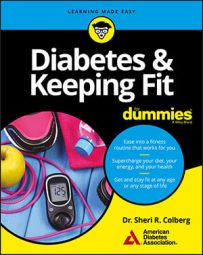Think of glucose and insulin as the actor and the director in a performance. The insulin (director) tells the glucose (actor) where to go and what to do to get the best showing out of it. It takes the two coordinating their roles to get the show done.
Glucose is the actor
When people talk about "blood sugar," they mean blood glucose, the primary sugar in your bloodstream that fuels the brain, nerves, muscles, and other cells around the body. Having too little in your blood can kill you. Unfortunately, so can having too much, especially over the long haul.Normally, your body digests the food you eat and breaks it down into more easily absorbed molecules, of which glucose is one. It's a simple sugar that comes mostly from the carbohydrates you eat.
Blood glucose can come from different sources, but you get it mostly from your food and drinks (although your liver makes some, too). Foods rich in carbohydrates (such as grains, milk, fruit and fruit juice, starchy vegetables, most desserts, and sugary drinks) are released as glucose in your bloodstream after your body digests them. Blood glucose levels normally increase slightly after eating, even if you don't have diabetes. Your brain, nervous system, and active muscles use some of that glucose right away, although all cells in the body use glucose at some point. When everything is working right, the body stores away the rest for later.
When your blood glucose levels are higher (such as after a meal), extra glucose usually gets packed away and stored in the liver and muscles as glycogen. When your blood glucose is low, glucagon (a hormone made by the pancreas) is released and signals the liver to let out some of its stored glycogen as blood glucose. When you're active, your muscles also use some of the glycogen stored in them as fuel, but the glucose coming from muscle glycogen stores stays in the muscle and doesn't raise your blood glucose. Using up the glycogen in your muscles by exercising gives your body a place to easily store more carbohydrates after you eat the next time, reducing the amount of excess glucose flowing around in your blood, potentially causing inflammation and damage.
Insulin is the director
When your body is working normally, your blood glucose goes up after you eat a meal, and your pancreas senses this increase and releases a hormone called insulin to help lower it. Insulin works by binding to its receptors on cells in muscle and fat, the primary places where the body can store glucose for later use.Two separate, but related, aspects of diabetes are associated with your body's insulin. One is how effectively insulin works. If you have type 2 diabetes or prediabetes, insulin may be abundant, but it doesn't work well to lower blood glucose — that is, you have insulin resistance. People with other types of diabetes can become insulin resistant as well. The second is the amount of insulin that is available. Persons with type 1 diabetes make little or no insulin; people with prediabetes and type 2 diabetes have an inadequate amount of insulin produced to meet their needs.
Insulin is a hormone made by the pancreas that, when released into the bloodstream, works to allow blood glucose to enter your cells that are insulin sensitive, primarily muscle, fat, and liver cells. Some of it gets used as a fuel by those cells, but the rest is stored in these tissues for later use. During rest, insulin works to make sure that glucose leaves the blood and goes into the cells, which keeps your blood glucose from going too high or staying that way after eating. Unfortunately, excess blood glucose that can't enter cells for any reason can cause damage to your body over time.
The other aspect is how much insulin the pancreas produces. You can be deficient in insulin, meaning that you simply don't make much. People with various types of diabetes can also have this issue. In that case, they may need to take medications to stimulate the pancreas to produce more, take insulin to supplement their supply, or use other medications that lower blood glucose other ways. In either case, your blood glucose may rise too high at various times, such as after you eat, when you're stressed out, if you're ill, and when you exercise vigorously.
Regardless of whether you have insulin that doesn't work well or too little of it overall, exercise can help your body use insulin more effectively. Weight loss can also help. Being more sensitive to the insulin you do have means that less insulin can lower blood glucose more. In people who have insulin resistance, improving the action of insulin may even reverse the course of their disease.
When overweight people with type 2 diabetes lose just 7 percent of their body weight, their insulin action increases by 57 percent.
Even if you don't have diabetes, you may still be insulin resistant. Being overweight, staying sedentary, and eating a poor diet can all lead to insulin resistance, in which case your body will need more insulin to get the job done. If you're insulin resistant, you can take steps to improve your insulin action that will benefit your overall health.
